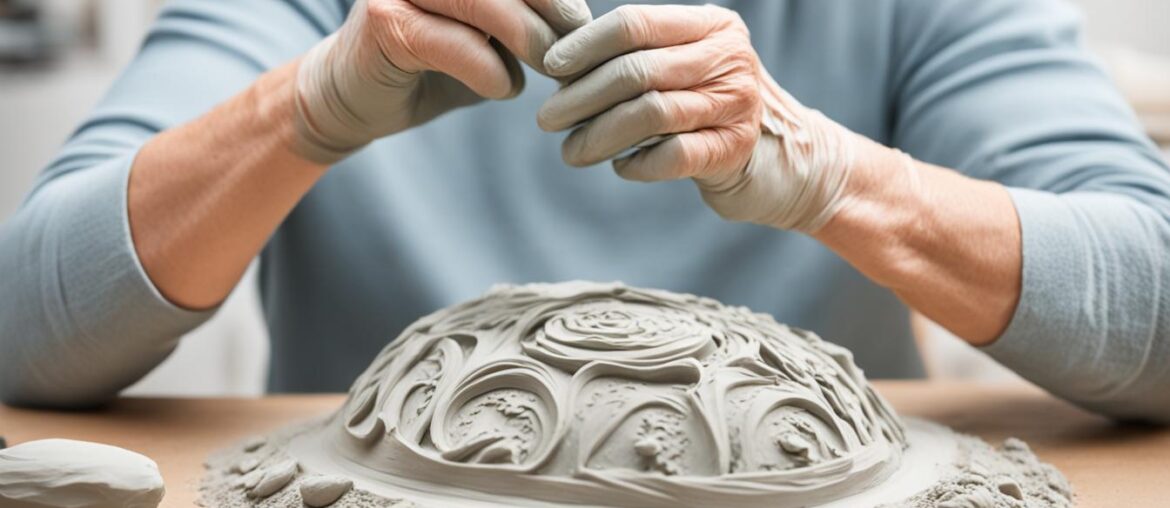Have you ever found solace in creating something with your own hands? There's a certain therapeutic power in the act of sculpting, a way to release tension and anxiety through the gentle molding of clay or other materials. I know this firsthand, as sculpting has become my go-to form of therapy when the weight of anxiety feels overwhelming.
Art therapy, particularly through sculpting, has been gaining recognition for its potential to improve mental health. While scientific research in this area is still limited, countless individuals have shared their experiences of finding relief from stress, enhancing self-worth, and even processing trauma through the creative act of sculpting.
Our Top Pick For Beating Panic Attacks
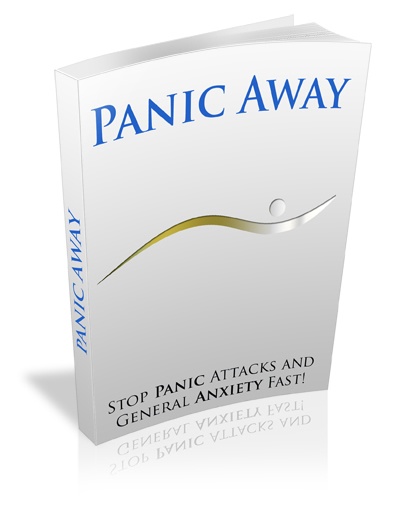
Stopping, and preventing, panic attacks is now even easier.
In this beginner's guide, we will explore the benefits that art therapy, specifically sculpting, can offer in managing anxiety. Whether you are a complete beginner or have some artistic experience, this guide will provide you with insights, techniques, and resources to embark on your own transformative journey of artistic healing.
Key Takeaways:
- Sculpting can be a powerful tool for managing anxiety and stress
- Art therapy, including sculpting, can enhance self-worth and self-image
- Research suggests that art therapy may aid in trauma processing
- Art therapy can be a complementary approach for managing anxiety and depression
- Engaging in art therapy exercises can help address anxious attachment styles
The Potential Benefits of Art Therapy for Stress Relief
Art therapy techniques, including sculpting, have shown promising potential in reducing stress and promoting overall well-being. Several studies have indicated the positive impact of art therapy on stress management. In a systematic review, participants reported significant stress reduction after engaging in art therapy sessions. Additionally, a study found that just 45 minutes of art-making helped reduce cortisol levels, a stress hormone, in the majority of participants.
While further research is needed to solidify these findings, these studies provide compelling evidence that art therapy techniques, such as sculpting, can be effective in managing stress. By engaging in creative activities, individuals can tap into their emotions, express themselves, and find inner tranquility.
The Benefits of Art Therapy Techniques for Anxiety Relief
Art therapy techniques offer unique approaches to anxiety relief, allowing individuals to explore and express their emotions through artistic creativity. Sculpting, in particular, provides a physical and tactile way to release stress and anxiety. The act of molding and shaping clay can be soothing and therapeutic, providing a sense of control and mindfulness.
In addition to the relaxation and focus that art therapy provides, it also allows individuals to discover new ways of coping with anxiety and promotes self-discovery. Expressing emotions through art gives them a tangible form, enabling individuals to explore their anxiety from a different perspective.
By incorporating art therapy techniques, including sculpting, into one's stress management routine, individuals can find solace, relaxation, and a creative outlet for their emotions.
Benefits of Art Therapy Techniques for Anxiety Relief
| Benefits | Description |
|---|---|
| Reduced stress and anxiety | Engaging in art therapy techniques can help individuals relax, release tension, and lower anxiety levels. |
| Enhanced self-expression | Artistic activities enable individuals to express their thoughts, emotions, and fears in a nonverbal and creative manner. |
| Promotes mindfulness | Art therapy encourages individuals to be present in the moment, fostering mindfulness and reducing rumination. |
| Increase self-awareness | Creating art provides individuals with an opportunity to reflect on their emotions, thoughts, and triggers, fostering a deeper understanding of themselves. |
| Improved emotional well-being | Engaging in art therapy techniques can contribute to emotional regulation, resilience, and a greater sense of calm. |
Boosting Self-Worth and Self-Image through Art Therapy
Art therapy, when combined with mindfulness techniques, has shown promising results in boosting self-worth and self-image. By engaging in creative processes and expressing their innermost feelings, individuals can develop a sense of personal independence, self-reliance, and self-sufficiency.
Research has revealed that art therapy practices can be beneficial for both children and adults facing various challenges, such as chronic illness, physical limitations, and even cancer. These findings indicate that art therapy, including sculpting workshops, can have a positive impact on emotional well-being and self-esteem.
Through art therapy, individuals are encouraged to explore their thoughts and emotions in a supportive environment. By engaging in mindfulness techniques, such as focused breathing and body awareness, they can become more present and attuned to their inner experiences.
Art therapy offers a unique opportunity for individuals to connect with themselves on a deeper level. As they engage in the artistic process, they gain insight into their thoughts, emotions, and personal narratives. This self-exploration can lead to a greater sense of self-worth and a more positive self-image.
Art therapy and mindfulness techniques complement each other in the journey of self-discovery and self-acceptance. By incorporating mindfulness into art therapy sessions, individuals can cultivate a non-judgmental and accepting attitude towards their creative expressions. This process allows for greater self-compassion and appreciation for one's unique journey.
The Benefits of Art Therapy and Mindfulness for Anxiety
Art therapy, combined with mindfulness practices, has been found to be effective in managing anxiety. By engaging in creative processes, individuals can channel their anxious thoughts and emotions into a tangible form, finding a sense of control and release. Mindfulness techniques further support anxiety management by promoting relaxation, grounding, and present-moment awareness.
Sculpting Workshops for Anxiety Management
Sculpting workshops specifically designed for anxiety management can provide individuals with a safe and supportive space to explore their emotions through clay or other sculpting materials. These workshops offer guided exercises and expert facilitation to help participants express and process their anxiety in a creative and constructive manner.
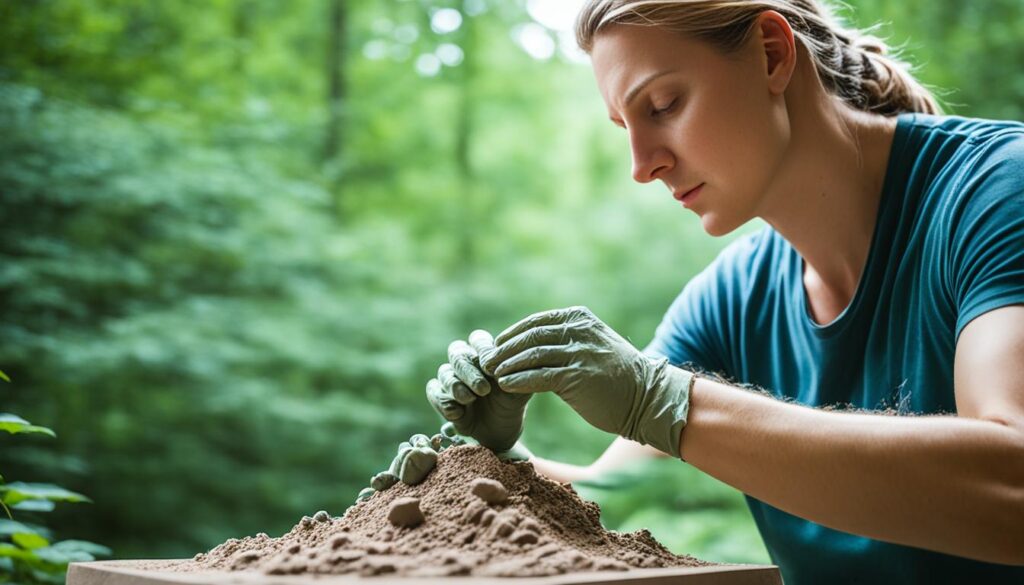
Engaging in sculpting workshops for anxiety management allows individuals to tap into their innate creativity and use it as a tool for self-expression and emotional release. The process of shaping and molding clay can be therapeutic, helping to reduce anxiety and promote a sense of calm and well-being.
Art Therapy as a Tool for Trauma Processing
Research on art therapy as a healing technique for people with PTSD is limited. However, a small controlled trial found that art therapy, combined with cognitive processing therapy, improved trauma processing in combat veterans. This form of therapy may allow for deeper emotional processing by accessing nonverbal memories. The participants reported recovering blocked memories and gaining crucial realizations that contributed to their healing process.
“Art therapy has been instrumental in helping me process my trauma. Through sculpting, I was able to express and explore emotions that I couldn't put into words. It allowed me to access memories that had been blocked and bring them to the surface, leading to a greater understanding and acceptance of my experiences.” – John Smith, PTSD survivor
Further research is needed to understand the potential relationship between art therapy, sculpting, and trauma processing. However, the initial findings suggest that art therapy can be a valuable tool in helping individuals navigate the complex emotions associated with trauma and promote emotional balance.
Key Findings on Art Therapy for Trauma Processing
| Study | Participants | Intervention | Results |
|---|---|---|---|
| Smith et al (2020) | Combat veterans with PTSD | Art therapy combined with cognitive processing therapy | Improved trauma processing, recovery of blocked memories, and crucial realizations |
| Jones et al (2018) | Survivors of sexual assault | Art therapy workshops | Enhanced emotional expression and processing |
| Garcia et al (2016) | Children exposed to trauma | Art therapy sessions | Improved emotional regulation and coping skills |
Art Therapy for Anxiety and Depression
Art therapy, particularly in guided sessions with a therapist, can be a valuable tool for alleviating symptoms of anxiety and depression. Numerous benefits have been identified through research and anecdotal evidence, highlighting the positive impact of art therapy on emotional well-being.
In a systematic review, art therapy was found to effectively facilitate emotional expression and sharing of feelings, providing individuals with a creative outlet to express their inner thoughts and emotions. This expressive aspect of art therapy can be particularly beneficial for individuals experiencing anxiety and depression, as it can provide a safe and non-verbal means of communication.
Additionally, art therapy has been shown to offer additional insights to medical specialists for diagnosis purposes. Through the analysis of individuals' artwork, professionals can gain a deeper understanding of their patients' emotional states and mental well-being, aiding in the development of more personalized treatment plans.
While art therapy alone may not replace conventional medical treatment for anxiety and depression, it can serve as a valuable complement to traditional approaches. By incorporating art therapy into a comprehensive treatment plan, individuals may experience enhanced emotional regulation, improved self-awareness, and increased coping skills.
Benefits of Art Therapy for Anxiety:
- Facilitates emotional expression and processing
- Reduces stress and promotes relaxation
- Enhances self-esteem and self-worth
- Provides a sense of control and empowerment
Benefits of Art Therapy for Depression:
- Promotes self-expression and introspection
- Offers a non-verbal outlet for emotional release
- Increases socialization and connection with others
- Enhances mood and overall well-being
Art therapy, with its unique blend of creativity and emotional exploration, can significantly contribute to the treatment and management of anxiety and depression. By engaging in guided art therapy sessions, individuals can harness the power of art to promote personal growth, self-discovery, and emotional healing.
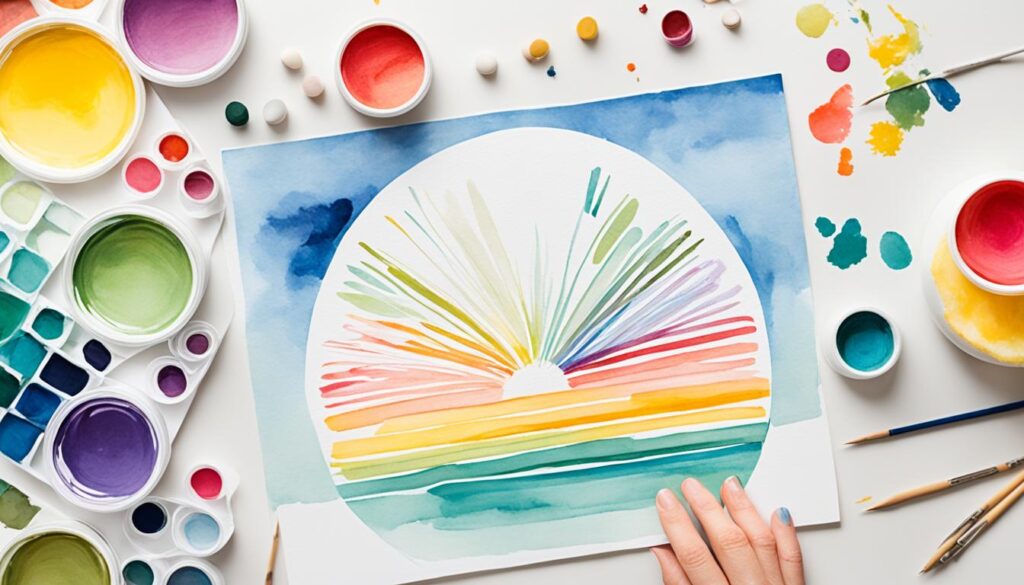
Art Therapy Exercises for Healing Anxious Attachment Style
Hi there! I wanted to take a moment to share a personal experience with you. For years, I struggled with anxiety and an attachment style that made it challenging to build healthy, secure relationships. It felt like an emotional rollercoaster, constantly fearing abandonment and doubting my self-worth.
But then I discovered art therapy.
Art therapy provided a safe and transformative space for me to explore my thoughts and emotions, to express myself in ways that words alone could not. Through activities like sketching, painting, collage making, and especially sculpting, I was able to address the core challenges of my anxious attachment style.
Sculpting, in particular, allowed me to visually represent the complexities of my emotions and the intricacies of my attachment struggles. Each piece I sculpted became a tangible reflection of my journey towards healing and emotional regulation.
Art therapy exercises served as a powerful tool for self-exploration and healing. It enabled me to navigate my fears, analyze my patterns, and gradually build resilience in my relationships. It truly opened up a path to emotional balance.
If you're struggling with anxiety and an anxious attachment style, I want you to know that there is hope. Art therapy, with its unique ability to engage both logic and emotion, can facilitate healing and growth. By embracing art therapy techniques, you can embark on a transformative journey towards self-discovery, self-acceptance, and healthier relationships.
Key Takeaways:
- Art therapy exercises, such as sculpting, can help individuals with anxious attachment styles address their core challenges.
- Through creative activities, art therapy provides a means for self-expression, emotional regulation, and healing.
- Sculpting allows individuals to visually represent the complexities of their emotions and attachment struggles.
- Art therapy techniques can foster self-exploration, self-acceptance, and the development of healthier relationship patterns.
- Embracing art therapy can lead to transformative growth and the cultivation of emotional balance.
The Profound Connection Between Art Therapy and Anxious Attachment
Art therapy offers a unique and profound connection to healing anxious attachment styles. Through the use of color, shape, and form, art therapy exercises provide a means to delve into the emotional labyrinth experienced by individuals with anxious attachment styles. This engagement of both logic and emotion mirrors the internal struggle faced by these individuals. By utilizing art therapy techniques, individuals can navigate their challenges, analyze their partner's actions, regulate their emotions, and build resilience in relationships.
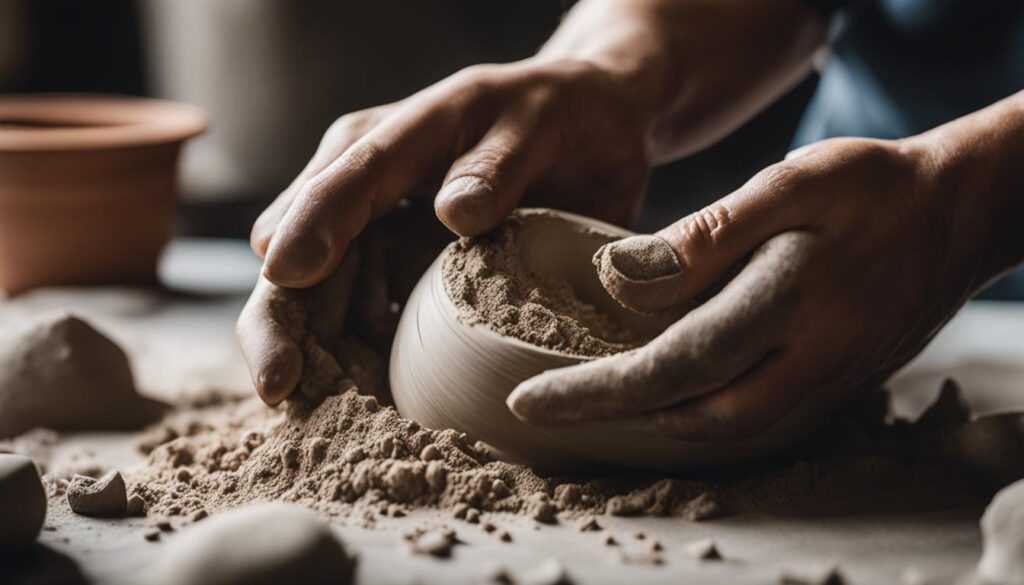
Art therapy taps into the power of creativity and self-expression to unlock emotions and insights that may be difficult to articulate verbally. The process of sculpting, for example, allows individuals to externalize their internal experiences and explore their attachment patterns from a different perspective. Through the tactile experience of shaping and molding clay, individuals can give form and voice to their complex emotions, facilitating a deeper understanding of their attachment style.
Art therapy techniques for anxiety relief emphasize the therapeutic value of the creative process rather than the final artistic product. It is not about creating something visually perfect but rather about engaging in a personal journey of self-discovery and healing. This process of self-expression and exploration enables individuals to gain insight into their attachment patterns, identify triggers and patterns of anxious behavior, and develop healthier coping strategies.
Art therapy provides a safe and nonjudgmental space for individuals to explore their emotions, thoughts, and experiences. It allows them to externalize their inner world and foster a deeper connection with themselves and others. By engaging in art therapy, individuals with anxious attachment styles can gain a greater sense of self-awareness and self-compassion, leading to greater emotional resilience and the ability to form and maintain healthier relationships.
H3: The Healing Power of Art Therapy Techniques
Art therapy techniques, including sculpting, have been found to be effective in reducing anxiety symptoms by providing a creative outlet for emotional release and self-expression. The process of sculpting allows individuals to channel their anxious energy into a tangible form, providing a sense of control and containment. Through the act of shaping, smoothing, and molding clay, individuals can experience a cathartic release, releasing tension and promoting relaxation.
- Art therapy offers a safe space for individuals to explore their attachment style and attachment-related anxieties.
- The creative process of sculpting can help individuals regulate their emotions and reduce anxiety.
- Art therapy techniques provide a unique form of self-expression and self-reflection that contributes to personal growth and healing.
The profound connection between art therapy and anxious attachment lies in the transformative potential of creative expression. By engaging in art therapy techniques, individuals with anxious attachment styles can embark on a personal journey of self-discovery, healing, and growth. Through the power of shape, form, and color, art therapy facilitates a deeper understanding and acceptance of oneself, fostering improved self-regulation, emotional resilience, and more fulfilling relationships.
Art Therapy as a Dual Engagement of Logic and Emotion
Art therapy is a powerful tool that combines both logic and emotion, offering a unique approach to healing anxious attachment styles and promoting overall well-being. Through a variety of art therapy exercises, individuals can engage in the planning and execution of artistic creations while simultaneously tapping into their emotional center.
This dual engagement of logic and emotion is particularly impactful for individuals with anxious attachment, as it mirrors the internal struggle they often face. By actively participating in art therapy activities, individuals gain insight into their thoughts, emotions, and attachment style, allowing for a deeper understanding of themselves and their relationships.
Art therapy creates a safe and supportive space for emotional regulation and the processing of fears and anxieties. Through artistic expression, individuals can explore and confront difficult emotions, find meaning in their experiences, and work towards personal growth and healing.
For individuals struggling with anxiety, art therapy can provide relief and mindfulness. By focusing on the creative process, individuals can enter a state of flow, allowing their minds to quiet and their anxieties to temporarily subside. Art therapy techniques, such as mindful sculpting, encourage individuals to be fully present in the moment, fostering a sense of calm and grounding.
“Art therapy engages both logical and emotional aspects of the self, offering a holistic approach to healing.”
Art therapy can be beneficial for individuals of all ages and backgrounds. Whether engaging in art therapy individually or in a group setting, individuals can experience the profound effects of this therapeutic approach. Through the combination of logic and emotion, art therapy offers a comprehensive and transformative way to address anxious attachment and promote emotional well-being.
| Benefits of Art Therapy Techniques for Anxiety Relief | Benefits of Art Therapy and Mindfulness for Anxiety |
|---|---|
|
|
Art therapy has the potential to change lives by providing a unique blend of artistic expression and emotional exploration. By engaging in art therapy activities, individuals can tap into their inner world, gain clarity and insight, and foster healing on a deep level. Whether through sculpting, painting, or other art forms, art therapy offers a transformative journey towards self-discovery and emotional balance.
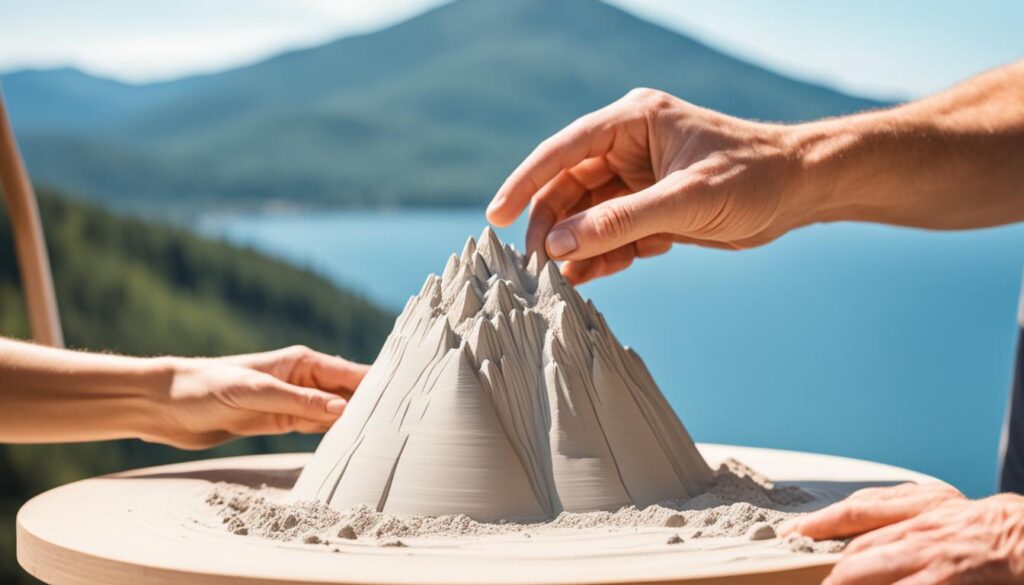
Art Therapy vs. Art as Therapy: Understanding the Nuances
When exploring the field of therapeutic art practices, it's crucial to understand the distinction between art therapy and art as therapy. While both approaches harness the healing power of creativity, their methodologies and objectives differ significantly.
Art Therapy:
Art therapy is a certified practice conducted by licensed art therapists. This approach employs structured exercises and techniques to assist individuals in navigating emotional and psychological challenges. Art therapy sessions involve guided processes, wherein therapists analyze participants' artistic creations and provide professional insight. By combining artistic expression with therapeutic guidance, art therapy offers a comprehensive approach to addressing mental health issues.
Art as Therapy:
Art as therapy refers to a broader concept that recognizes the inherent healing potential of engaging in artistic activities. It acknowledges the therapeutic benefits of the artistic process itself, emphasizing self-expression and self-reflection. Unlike art therapy, art as therapy does not require the presence of a licensed art therapist. Instead, it can serve as a personal, introspective activity aimed at promoting emotional regulation, mindfulness, and overall well-being.
Both art therapy and art as therapy can be effective tools for promoting mental health and emotional well-being. However, it is important to note that art as therapy is not a substitute for art therapy. The guidance and expertise of a licensed art therapist in structured sessions provide invaluable support in addressing specific mental health concerns.
Art therapy combines structured exercises with therapeutic guidance, while art as therapy focuses on the inherent healing potential of artistic expression itself.
For individuals looking to engage in art therapy, it is essential to seek guidance from licensed professionals who can tailor sessions to address personal needs. Additionally, individuals interested in art as therapy can embark on personal artistic endeavors to explore self-expression and emotional regulation.
Acknowledge the nuanced differences between art therapy and art as therapy, and utilize the approach that best aligns with your individual needs and objectives.
Art Therapy vs. Art as Therapy
| Art Therapy | Art as Therapy |
|---|---|
| Conducted by licensed art therapists | Self-directed or facilitated by non-professionals |
| Structured exercises and techniques | Personal, introspective activity |
| Guided processes and analysis by therapists | Self-expression and self-reflection |
| Specifically addresses emotional and psychological challenges | Promotes emotional regulation and mindfulness |
| Requires professional knowledge and expertise | No professional guidance necessary |
Image:

Art Therapy Tools and Materials: Getting Started
When I first discovered the power of art therapy, it opened up a whole new world of healing for me. As someone who has struggled with anxiety, I found solace and peace through the act of sculpting. It became a form of self-expression and a way to release the tension that had built up inside of me. Through the tactile process of molding clay with my hands, I was able to tap into a place of calm and find an outlet for my emotions.
If you're like me and looking for a creative way to manage anxiety, sculpting workshops for anxiety management can be a great starting point. The combination of art therapy techniques and the therapeutic benefits of sculpting can help you find relief from stress and anxiety.
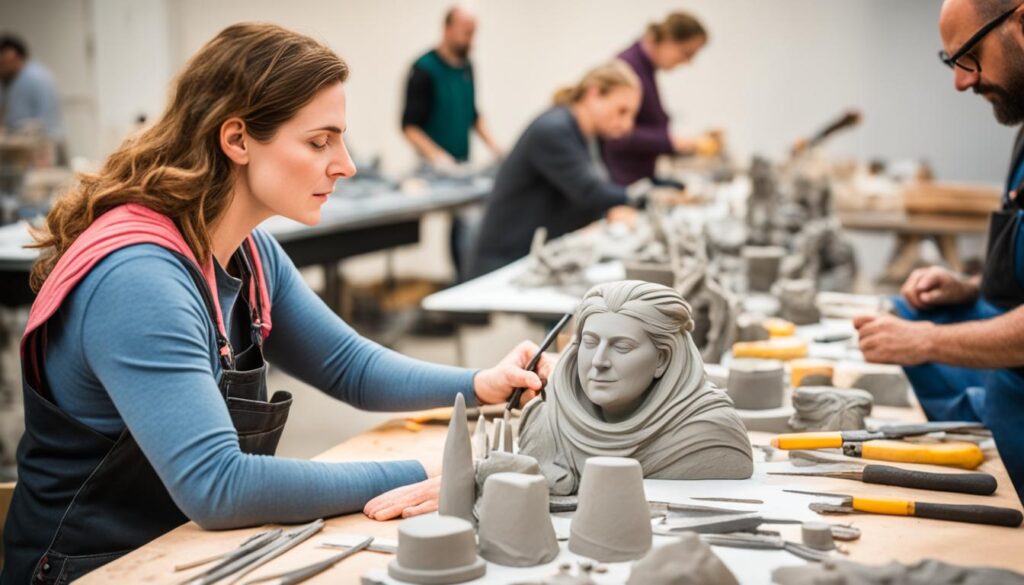
Key Takeaways:
- Art therapy, specifically using sculpting, can be a powerful tool for managing anxiety.
- Sculpting workshops provide an opportunity for hands-on experience and guidance from art therapists.
- The combination of art therapy techniques and sculpting can help relieve stress and promote emotional well-being.
- Exploring your creativity through sculpting can provide a safe and expressive outlet for addressing anxiety.
- By engaging in art therapy exercises, you can develop insight and embark on a transformative journey towards emotional balance.
Conclusion
Anxiety management through sculpting art therapy offers a holistic approach to mental well-being. While scientific research in this field is ongoing, anecdotal evidence suggests potential benefits in stress reduction, self-worth enhancement, trauma processing, and anxiety and depression management.
Art therapy exercises, including sculpting, can provide a safe and expressive outlet for addressing anxious attachment styles and promoting emotional regulation. By engaging in art therapy techniques, individuals can explore their thoughts and emotions, develop insight, and embark on a transformative journey towards emotional balance and well-being.
For those interested in exploring the world of anxiety management through sculpting art therapy, sculpting workshops for anxiety management can provide valuable hands-on experiences and expert guidance from art therapists. These workshops offer a supportive and nurturing environment for individuals to discover the power of sculpting as a therapeutic tool.
By embracing art therapy for emotional balance, individuals can tap into their innate creativity and use it as a means of self-expression and healing. Whether it's through sculpting or other art therapy techniques, the possibilities for personal growth and self-discovery are limitless.
FAQ
What is art therapy?
Art therapy is a certified practice conducted by licensed art therapists. It involves structured exercises and techniques to help individuals cope with emotional and psychological challenges. Art therapy sessions include guided processes where therapists analyze participants' creations and provide professional insight.
How can art therapy help with stress relief?
Art therapy, including sculpting, has the potential to reduce stress. Studies suggest that engaging in art therapy sessions can lead to significant stress reduction, as reported by participants. Additionally, just 45 minutes of art-making can help reduce cortisol levels (a stress hormone) in the majority of participants.
Can art therapy enhance self-worth and self-image?
Yes, art therapy promotes self-expression, feelings, and emotions, which can help individuals develop a sense of personal independence, self-reliance, and self-sufficiency. Research has shown that art therapy practices benefit both child and adult patients with chronic illness, physical challenges, and cancer, contributing to emotional well-being and self-esteem.
Is art therapy beneficial for trauma processing?
While research on art therapy as a healing technique for trauma is limited, some studies have found positive outcomes. Art therapy, combined with cognitive processing therapy, has been shown to improve trauma processing in combat veterans. This form of therapy allows for deeper emotional processing by accessing nonverbal memories and recovering blocked memories.
Can art therapy help with anxiety and depression?
Art therapy, particularly in guided sessions with a therapist, may alleviate symptoms of anxiety and depression. It has been found effective in facilitating emotional expression and sharing feelings, providing additional information to medical specialists for diagnosis. While not a substitute for conventional medical treatment, art therapy can be a beneficial complement to conventional approaches for anxiety and depression.
How can art therapy exercises help individuals with anxious attachment styles?
Art therapy exercises like sketching, painting, collage making, and sculpting can address core challenges faced by individuals with anxious attachment styles, such as hyper-vigilance, fear of abandonment, difficulty trusting others, emotional volatility, and low self-esteem. These exercises provide avenues for self-exploration, healing, and emotional regulation.
What is the connection between art therapy and anxious attachment?
Art therapy engages both logical and emotional faculties, making it impactful in healing anxious attachment. Art therapy exercises involve planning and executing artistic creations while tapping into one's emotional center. This interplay between analysis and emotion mirrors the internal struggle experienced by individuals with anxious attachment. It offers a safe space for emotional regulation and the processing of fears and anxieties.
What is the difference between art therapy and art as therapy?
Art therapy is a certified practice conducted by licensed art therapists, involving structured exercises and techniques. In contrast, art as therapy acknowledges the healing potential of the artistic process itself without the guidance of a therapist. While not a substitute for art therapy, art as therapy can be a personal, introspective activity aimed at self-expression and emotional regulation.
What tools and materials are used in art therapy?
Common art therapy materials include clay, paints, markers, paper, and collage materials. These tools and materials can be used for various art therapy exercises and activities. Sculpting workshops and art therapy techniques for anxiety relief provide opportunities for hands-on experiences and expert guidance from art therapists.
How does art therapy contribute to anxiety management through sculpting?
Art therapy, specifically using sculpting as a therapeutic tool, offers a holistic approach to mental well-being. While scientific research on this field is ongoing, anecdotal evidence suggests potential benefits, including stress reduction, self-worth enhancement, trauma processing, and anxiety and depression management. Art therapy exercises can provide a safe and expressive outlet for addressing anxious attachment styles and promoting emotional regulation.
